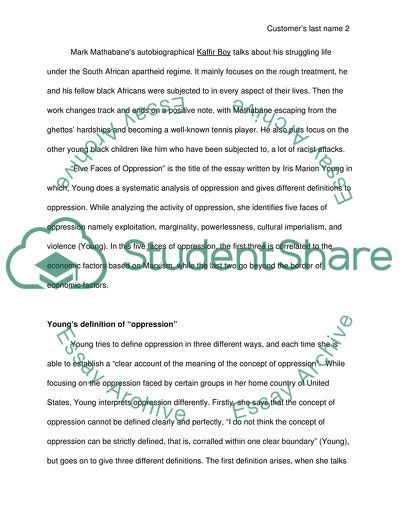Cite this document
(Comparison of Kaffir Boy by Mark Mathabane and Five Faces of Book Report/Review, n.d.)
Comparison of Kaffir Boy by Mark Mathabane and Five Faces of Book Report/Review. https://studentshare.org/literature/1709582-analytic-critical-readinga-and-writing
Comparison of Kaffir Boy by Mark Mathabane and Five Faces of Book Report/Review. https://studentshare.org/literature/1709582-analytic-critical-readinga-and-writing
(Comparison of Kaffir Boy by Mark Mathabane and Five Faces of Book Report/Review)
Comparison of Kaffir Boy by Mark Mathabane and Five Faces of Book Report/Review. https://studentshare.org/literature/1709582-analytic-critical-readinga-and-writing.
Comparison of Kaffir Boy by Mark Mathabane and Five Faces of Book Report/Review. https://studentshare.org/literature/1709582-analytic-critical-readinga-and-writing.
“Comparison of Kaffir Boy by Mark Mathabane and Five Faces of Book Report/Review”. https://studentshare.org/literature/1709582-analytic-critical-readinga-and-writing.


